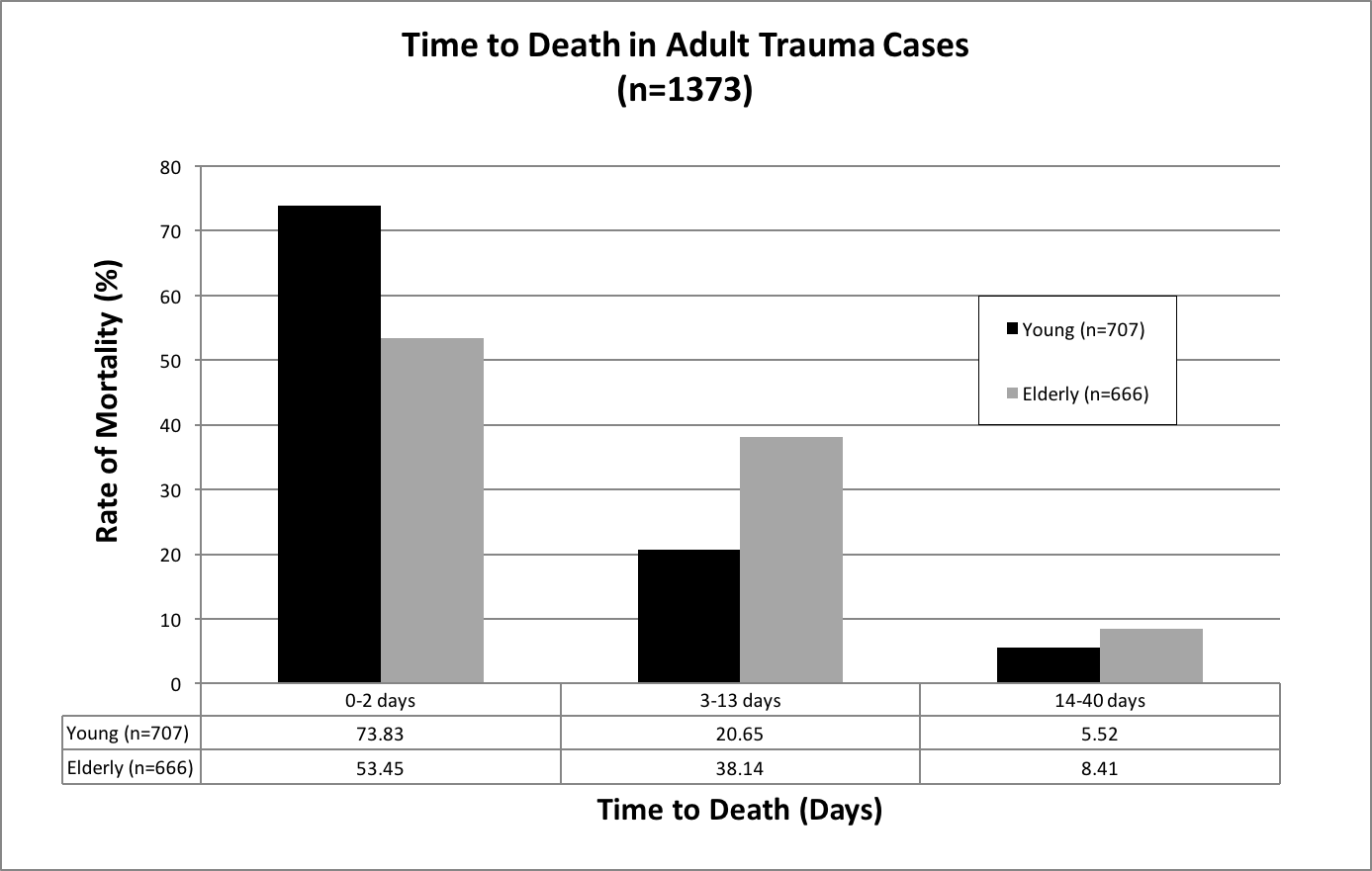J. C. Albarracin1, C. E. Wade1, B. Oyeniyi1, J. B. Holcomb1, S. D. Adams1 1University Of Texas Health Science Center At Houston,Department Of Surgery,Houston, TX, USA
Introduction:
Trauma mortality in the elderly population poses an alarming public health risk. The elderly are a rapidly increasing proportion of the population and account for a disproportionate number of trauma deaths. Elderly patients with injuries stay in the hospital twice as long as younger patients with similar injuries and are twice as likely to die. Previous studies have analyzed the temporal distribution of all trauma-related deaths, but none have focused specifically on the elderly, a growing segment of the population. The objective of our study was to evaluate and compare time to death in elderly and younger trauma patient populations. We hypothesized that the elderly would survive the initial injury but display an increase in delayed deaths in comparison to the young.
Methods:
We performed a retrospective review of adult trauma deaths over 5 years at at our Level I trauma center (1/2010-12/2014). We reviewed trauma registry data, Morbidity & Mortality reports and electronic medical records, and categorized patients as elderly (≥ 55 years) and young (16-54 years). The rate of mortality in each group was calculated and Injury Severity Scores (ISS) scores compared. The log-rank test was used to compare variables between the two populations, with significance set at p<0.05.
Results:
There were 27,977 admissions and 1,373 trauma deaths over the five-year period. The median age was 53± 23 years, which increased from 50± 24 years (n=264) in 2010 to 55± 23 years (n=265) in 2014. The median age of the elderly was 75± 12 years (n=666) and the young was 32± 12 years (n=707). The elderly displayed a lower rate of mortality (53.5%) within the first 48h than did the young (73.8%). After day 2, the elderly exhibited a higher rate of mortality that persisted for 13 days (38.1%) compared to the young (20.7%). The elderly died with a lower average ISS score compared to the young. The lower ISS of the elderly was more pronounced in the delayed deaths. When an age adjusted factor was added to the calculated ISS of the elderly, the averages mirrored that seen in the young. During days 0-2, the adjustment factor was +6, whereas in 3-13 and 14-40 day time periods the age adjustment factor was +10 and +7 respectively.
Conclusion:
We have demonstrated a significant difference in the temporal distribution of trauma mortality in the elderly through 13 days post-injury. These findings provide guidance for the care of the elderly trauma patient and a framework for adjusting expectations of survival between elderly and younger trauma patients.
